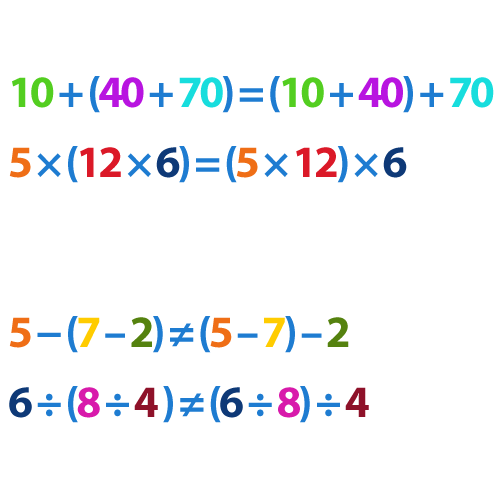associative
This is a law which is used to describe mathematical operators that give the same answer.
Numbers can be grouped in different ways, but the answer is always the same.
The addition and multiplication of numbers are associative.
For example:
-
•
• ![]()
The answers to the above are the same.
The subtraction and division of numbers are not associative.
For example:
-
•
• ![]()
The answers to the above are not the same, therefore the ≠ sign is used to show this.

